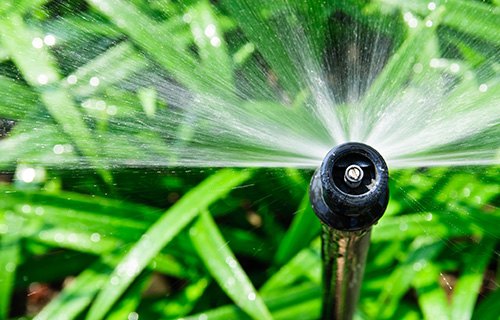Spring is Almost Here, Check Out these Landscaping Tips
Studies show that landscapes are frequently overwatered, anywhere from 25 to 50%, resulting in plant disease, soil compaction and often damage to foundations and hardscapes. Overwatering can also cause erosion and pollution runoff, so try to cut back on your watering times by 25%-33%. For example…
- If you water every other day, cut back to three days a week or less. Then monitor the health of your plantings and adjust as necessary.
- Change your watering to irrigate deeply but infrequently to encourage deep root growth and drought tolerance.
- If your landscape is watered four times a week for 15 minutes each time, switch to watering twice a week for 30 minutes.
- Adjust the irrigation schedule to water during cooler times of the day, preferably early morning between 4 and 6 a.m. Less water will evaporate and more will go into the ground where it’s needed.
- Adjust irrigation schedules monthly. Watering needs in the spring are generally much less than during the hot summer months.
Instead of monitoring all of this yourself, you can retrofit your irrigation system with controls (e.g., moisture sensors, automatic rain shut-off valves or timers). If it is already equipped with controls, make sure you’re taking full advantage of them. For the latest technology, investigate smart controllers by companies such as WeatherTRAK . These systems take local weather conditions, plantings, and micro-conditions into account to develop highly customized solutions. You can also check with your local municipality or water utility for free, discounted or rebated water-saving devices, or this website: www.dsireusa.org.
It’s also important to remember that not all plantings require the same amount of water, so you should adjust your plantings as well. Turf requires more watering than trees and shrubs, so look for ways to replace turf. Reevaluate plants’ moisture requirements and ensure that irrigation zones are designed to receive the minimum amount of water needed to keep plants healthy. Work with your landscaper to replant with native plants or species that are adapted to your region because they should not require supplemental irrigation after one year. Make sure your landscaper avoids planting invasive species, which will out-compete native plants for water, nutrients and sunlight. Have them replaced with drought tolerant alternatives.
Meet with your landscaper early to develop a plan. Have them inspect the sprinkler system and inventory your current plantings in a written report. It’s also a good idea to discuss ways to reduce your watering costs and annual maintenance. From there they can develop a written plan for the year and provide you with monthly progress reports. You can also have them check your sprinklers regularly to be sure they’re not spraying buildings, sidewalks or roads. If plants are surrounded by pavement, consider slow-release gator bags or a drip or manual irrigation using a hose. In some climates, it may be cost-effective to replace your sprinklers with a drip irrigation system that concentrates water flow on the plant’s roots, saving 25-75% of the water used by conventional sprinklers. Have them identify and fix leaks in hoses and connections, inspect irrigation heads to ensure that they are functioning properly and ensure that the heads are sized appropriately for the area to be watered.
Water and sewer costs will continue to increase 8-10% annually, so it is important to evaluate your landscaping needs and not waste money overwatering. Save water, save money and save the planet...



